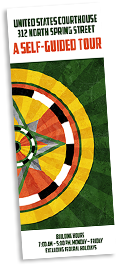The 1980s
The decade began with double-digit inflation, rising unemployment, and some of the finest talent being lost to AIDS. This was also a decade of excess and extravagance. Big, bold designs, new wave, and punk sensationalized the era. The 1980s was the “Me!” generation of status seekers. Hostile takeovers and mega-mergers created a new breed of billionaire, while credit became a way of life. Designer labels were everything. During this decade, the U.S. Constitution also turned two hundred years old.
 The Eighties began with two significant cases regarding the Native American community. First, in 1980, Riverside County Police raided a three-day-old card club on the Cabazon Indian Reservation run by members of the tribe. In County of Riverside v. Cabazon Band of Mission Indians, a small tribe who viewed gaming as critical to its economy was pitted against the local government that sought to regulate gambling. In 1980 and again in 1983, U.S. District Judge Laughlin E. Waters granted injunctions allowing the tribe to continue operating its bingo and card club enterprises pending appeals. In 1987, the U.S. Supreme Court held that states and municipalities could not regulate gambling on federal grounds. This decision paved the way for the development of the gaming industry on tribal lands around the country. The other major case occurred in 1972 as a result of an undercover operation where several Northwest Native Americans were indicted for violating wildlife laws along the Columbia River in the Pacific Northwest. The SoHappy family, along with Bruce Jim, were convicted of illegally selling salmon to undercover agents. The case was transferred to Los Angeles out of concern that the defendants would not get a fair trial in Tacoma, Washington. U.S. District Judge Jack E. Tanner from the Western District of Washington presided over the case, which was seen as an important test of the Lacey Act of 1981 that forbids anyone to trade in fish or wildlife taken in violation of any federal, state, or tribal law.
The Eighties began with two significant cases regarding the Native American community. First, in 1980, Riverside County Police raided a three-day-old card club on the Cabazon Indian Reservation run by members of the tribe. In County of Riverside v. Cabazon Band of Mission Indians, a small tribe who viewed gaming as critical to its economy was pitted against the local government that sought to regulate gambling. In 1980 and again in 1983, U.S. District Judge Laughlin E. Waters granted injunctions allowing the tribe to continue operating its bingo and card club enterprises pending appeals. In 1987, the U.S. Supreme Court held that states and municipalities could not regulate gambling on federal grounds. This decision paved the way for the development of the gaming industry on tribal lands around the country. The other major case occurred in 1972 as a result of an undercover operation where several Northwest Native Americans were indicted for violating wildlife laws along the Columbia River in the Pacific Northwest. The SoHappy family, along with Bruce Jim, were convicted of illegally selling salmon to undercover agents. The case was transferred to Los Angeles out of concern that the defendants would not get a fair trial in Tacoma, Washington. U.S. District Judge Jack E. Tanner from the Western District of Washington presided over the case, which was seen as an important test of the Lacey Act of 1981 that forbids anyone to trade in fish or wildlife taken in violation of any federal, state, or tribal law.
 The Los Angeles courthouse was the site of two lawsuits from two large and famous entities during the Eighties. The first was an anti-trust suit against the National Football League (NFL) filed in 1983 by Al Davis, the owner of the Oakland Raiders, and the Los Angeles Memorial Coliseum, where the Raiders hoped to play. When Davis tried to move the Raiders to Los Angeles, the NFL opposed the move since its rules stated that three-fourths of its members must approve a team moving into another team’s territory, and Los Angeles was considered Rams’ territory at the time. The trial, presided over by U.S. District Judge Harry Pregerson, resulted in a victory for the Coliseum and the Raiders, who became the Los Angeles Raiders, only to return to Oakland in 1995. The second lawsuit arose when the Academy of Motion Picture Arts and Sciences filed suit against Creative House Promotions, a trophy company in Chicago, over Creative’s production of the Star Award, a gold-colored metal trophy of a stylized male figure holding a star to his chest. The Academy claimed that the Star Award bore a striking resemblance to its Oscar, a gold-plated icon to the motion picture industry since its inception in 1929. In 1989, U.S. District Judge Laughlin E. Waters ruled that the Oscar statuette was not protected under copyright law since Oscar was part of the public domain. The Court of Appeals later reversed the decision.
The Los Angeles courthouse was the site of two lawsuits from two large and famous entities during the Eighties. The first was an anti-trust suit against the National Football League (NFL) filed in 1983 by Al Davis, the owner of the Oakland Raiders, and the Los Angeles Memorial Coliseum, where the Raiders hoped to play. When Davis tried to move the Raiders to Los Angeles, the NFL opposed the move since its rules stated that three-fourths of its members must approve a team moving into another team’s territory, and Los Angeles was considered Rams’ territory at the time. The trial, presided over by U.S. District Judge Harry Pregerson, resulted in a victory for the Coliseum and the Raiders, who became the Los Angeles Raiders, only to return to Oakland in 1995. The second lawsuit arose when the Academy of Motion Picture Arts and Sciences filed suit against Creative House Promotions, a trophy company in Chicago, over Creative’s production of the Star Award, a gold-colored metal trophy of a stylized male figure holding a star to his chest. The Academy claimed that the Star Award bore a striking resemblance to its Oscar, a gold-plated icon to the motion picture industry since its inception in 1929. In 1989, U.S. District Judge Laughlin E. Waters ruled that the Oscar statuette was not protected under copyright law since Oscar was part of the public domain. The Court of Appeals later reversed the decision.
Mafia members in Los Angeles also had their day in court during the 1980s when a case was filed against five reputed members of the Los Angeles “family” of La Cosa Nostra of the Italian American mafia. The trial in U.S. v. Brooklier was heard by U.S. District Judge Terry J. Hatter, Jr. and involved defendants Dominic Brooklier, Samuel Sciortino, Louis Dragna, Michael Rizzitello, and Jack LoCicero. The prosecution’s case rested largely on the testimony of Aladena “Jimmy the Weasel” Fratianno, a mafia hitman turned informant. All five faced charges of racketeering and extortion for allegedly using threats of force and violence to extort money from pornography business operators. They were also charged with the murder of Frank “The Bomp” Bompensiero, a mafia hitman who became a government informant. The jury convicted the defendants on eleven counts of conspiracy, racketeering, and extortion, but found them not guilty of murder. The defendants’ sentences ranged from two to five years in prison.
 A few years later in 1982, John Z. DeLorean, developer of the DeLorean DMC-12 sports car featured in the Back to the Future movies, was charged with conspiring to engage in a $24 million cocaine deal to save his financially failing auto company. During the trial, the defendant argued entrapment. As a result of the media’s interest in the case, U.S. District Judge Robert M. Takasugi ordered all documents from attorneys sealed. The Court of Appeals reversed the ruling, stating that the orders violated the public’s First Amendment right of access to criminal proceedings. Ultimately, DeLorean was acquitted by a jury in 1984.
A few years later in 1982, John Z. DeLorean, developer of the DeLorean DMC-12 sports car featured in the Back to the Future movies, was charged with conspiring to engage in a $24 million cocaine deal to save his financially failing auto company. During the trial, the defendant argued entrapment. As a result of the media’s interest in the case, U.S. District Judge Robert M. Takasugi ordered all documents from attorneys sealed. The Court of Appeals reversed the ruling, stating that the orders violated the public’s First Amendment right of access to criminal proceedings. Ultimately, DeLorean was acquitted by a jury in 1984.
 Two years after the conclusion of DeLorean’s case, Italian-born filmmaker Agostino “Dino” De Laurentiis took his oath of citizenship at the Los Angeles courthouse before U.S. District Judge Mariana Pfaelzer. De Laurentiis produced hundreds of films in Italy and the U.S., including the Academy Award-winning La Strada (1954), along with Serpico, Death Wish, and the remake of King Kong during the 1970s, and Conan the Barbarian and Blue Velvet in the 1980s. That same year, the parents of Ryan Thomas, a 5-year-old infected with AIDS as a result of a tainted blood transfusion, fought to have their son readmitted into kindergarten after being suspended from elementary school for biting a classmate during a skirmish. In Atascadero School District v. Ryan, Robin and Judy Thomas requested a permanent injunction that would allow their son to return to school. U.S. District Judge Alicemarie H. Stotler granted the request when the school district failed to provide medical evidence that AIDS could be transmitted through human bites. According to the American Civil Liberties Union, this case was believed to be the first federal decision in the country that stated that children with AIDS had a right to go to school. Ryan died a few years later in 1991.
Two years after the conclusion of DeLorean’s case, Italian-born filmmaker Agostino “Dino” De Laurentiis took his oath of citizenship at the Los Angeles courthouse before U.S. District Judge Mariana Pfaelzer. De Laurentiis produced hundreds of films in Italy and the U.S., including the Academy Award-winning La Strada (1954), along with Serpico, Death Wish, and the remake of King Kong during the 1970s, and Conan the Barbarian and Blue Velvet in the 1980s. That same year, the parents of Ryan Thomas, a 5-year-old infected with AIDS as a result of a tainted blood transfusion, fought to have their son readmitted into kindergarten after being suspended from elementary school for biting a classmate during a skirmish. In Atascadero School District v. Ryan, Robin and Judy Thomas requested a permanent injunction that would allow their son to return to school. U.S. District Judge Alicemarie H. Stotler granted the request when the school district failed to provide medical evidence that AIDS could be transmitted through human bites. According to the American Civil Liberties Union, this case was believed to be the first federal decision in the country that stated that children with AIDS had a right to go to school. Ryan died a few years later in 1991.
The 1980s also saw twenty-four of the twenty-five judges of the Central District meet in an unusual joint hearing at the Court of Appeals courthouse in Pasadena in April 1988. The meeting came about as a result of the Sentencing Reform Act of 1984, which was intended to increase consistency in federal sentencing. It also established the United States Sentencing Commission whose members adopted sentencing guidelines that established a fixed range of penalties for specific federal crimes. Sitting en banc, the judges considered motions in United States v. Lopez and twenty-one other cases that challenged the new Act and its guidelines. The majority decision stated that both were unconstitutional by violating the Separation of Powers Doctrine and the defendant’s right to due process. Ten judges dissented.

